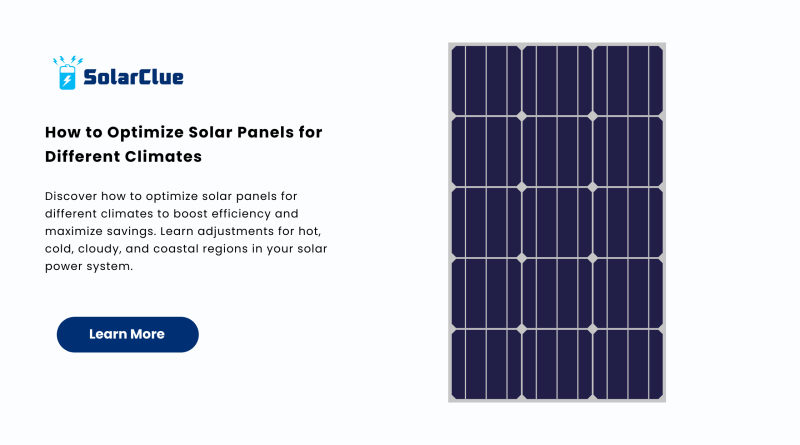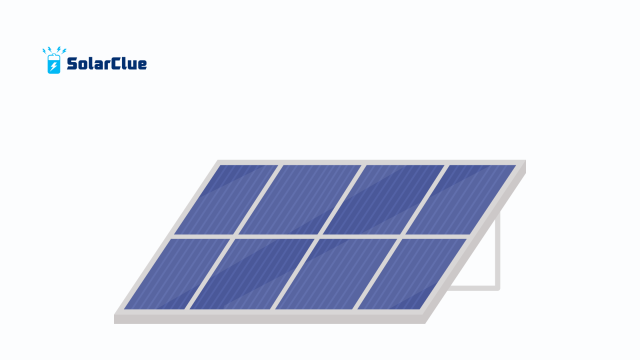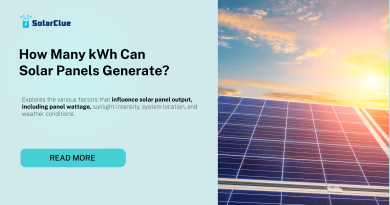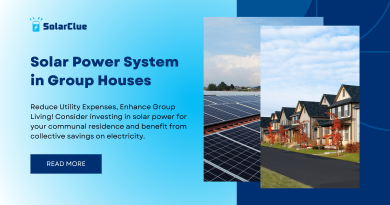How to Optimize Solar Panels for Different Climates
The performance of a solar panel depends not only on its quality but also on the climate where it is installed. Different regions experience unique weather conditions—ranging from high heat to heavy snow, persistent clouds, or salty coastal air. To maximize efficiency and longevity, it’s important to understand how to optimize your solar power system for these varying environments. This guide explains how to adjust, maintain, and make the most of your solar energy setup in different climates.
Table of Contents
Understanding Solar Panel Performance in Different Climates
Solar Panels in Hot Climates
In regions where temperatures soar above 35°C, such as parts of India, the Middle East, or Africa, solar panels face performance challenges. While panels thrive on sunlight, excessive heat can reduce efficiency due to higher resistance in electrical circuits.
Optimization Tips:
-
Install panels with better ventilation and spacing for airflow.
-
Opt for high-efficiency monocrystalline panels, which handle heat better.
-
Use reflective coatings or mounting systems designed to minimize overheating.
Solar Panels in Cold Climates
Contrary to popular belief, solar energy generation doesn’t stop in winter. In fact, solar panels perform more efficiently in cold temperatures because electrical resistance decreases. Snow, however, can block sunlight.
Optimization Tips:
-
Install panels at a steeper angle so snow slides off naturally.
-
Use anti-reflective glass and frameless panels to reduce snow buildup.
-
Regularly clear snow to maintain sunlight exposure.
Solar Panels in Cloudy and Rainy Climates
Regions with frequent rain or cloudy skies, like coastal cities or tropical areas, still benefit from solar power. Modern solar panels can generate electricity even with diffuse sunlight.
Optimization Tips:
-
Choose panels with higher efficiency rates (20%+).
-
Install a solar power system with battery storage to capture excess energy on sunny days.
-
Angle panels to maximize exposure during limited sunshine hours.
Solar Panels in Coastal Climates
Salty air and high humidity in coastal areas can corrode panel components and reduce system lifespan.
Optimization Tips:
-
Opt for panels with corrosion-resistant frames and anti-salt mist certification.
-
Schedule regular maintenance to clean salt deposits.
-
Consider protective coatings for longer durability.
Factors That Influence Optimization
Tilt Angle and Orientation
The angle of your solar panel should match your geographic latitude for year-round efficiency. For example, in India, a tilt of 15° to 25° works best depending on the region. Adjusting the tilt seasonally further optimizes output.
Shading and Obstructions
Climatic factors like trees, snow, or heavy dust storms can shade your solar panels. Even partial shading reduces the system’s output. Using microinverters or power optimizers ensures individual panel performance isn’t compromised.
Solar Battery Integration
Adding a battery to your solar power system ensures uninterrupted supply in climates where weather is unpredictable. Batteries store excess solar energy, making it available during low sunlight periods.
Panel Type and Technology
-
Monocrystalline panels: Best for hot and sunny climates due to high efficiency.
-
Polycrystalline panels: Affordable option for moderate climates.
-
Thin-film panels: Lightweight, flexible, and ideal for cloudy or shaded regions.
Benefits of Optimizing Solar Panels for Climates
-
Increased efficiency: Proper adjustments maximize energy output.
-
Longer lifespan: Protection against climate-specific challenges ensures durability.
-
Reduced maintenance costs: Climate-appropriate installations require fewer repairs.
-
Better return on investment: Optimized systems lower electricity bills faster.
Practical Tips for All Climates
-
Schedule professional inspections at least once a year.
-
Clean solar panels regularly to remove dust, debris, or salt deposits.
-
Use high-quality mounting structures that withstand local weather conditions.
-
Monitor system performance with solar monitoring apps.
-
Invest in warranties that cover climate-related damage.
FAQs
1. Do solar panels work in cloudy weather?
Yes, solar panels can generate electricity even on cloudy days, though efficiency may drop. Modern panels capture diffuse sunlight effectively.
2. Can solar panels withstand heavy rain?
Absolutely. Most panels are waterproof and designed to endure rain, but professional installation ensures proper sealing against leaks.
3. Is snow harmful to solar panels?
Snow generally doesn’t damage panels. In fact, snow reflection can boost sunlight absorption. However, clearing thick snow ensures maximum performance.
4. Which solar panels are best for hot regions?
Monocrystalline solar panels are highly efficient in hot climates and perform better than polycrystalline panels under high temperatures.
5. How can I protect solar panels in coastal areas?
Use panels with salt mist resistance certification and schedule regular cleaning to remove salt deposits that cause corrosion.
Conclusion
No matter where you live, optimizing your solar panel installation for local climate conditions ensures better efficiency, longer life, and maximum savings. Whether you face scorching summers, snowy winters, cloudy monsoons, or salty coastal air, a well-planned solar power system will keep generating clean and reliable solar energy. If you are planning to make the most of your solar journey, visit solarclue.com and blog.solarclue.com today to explore expert tips, products, and solutions tailored just for you.




